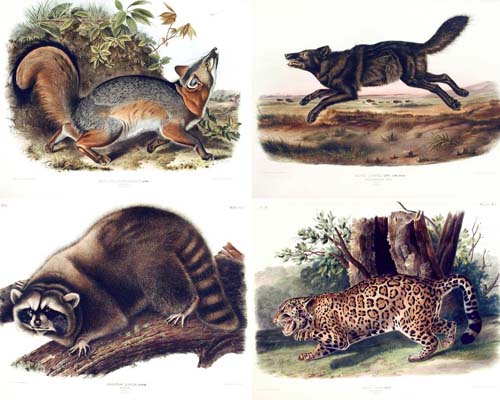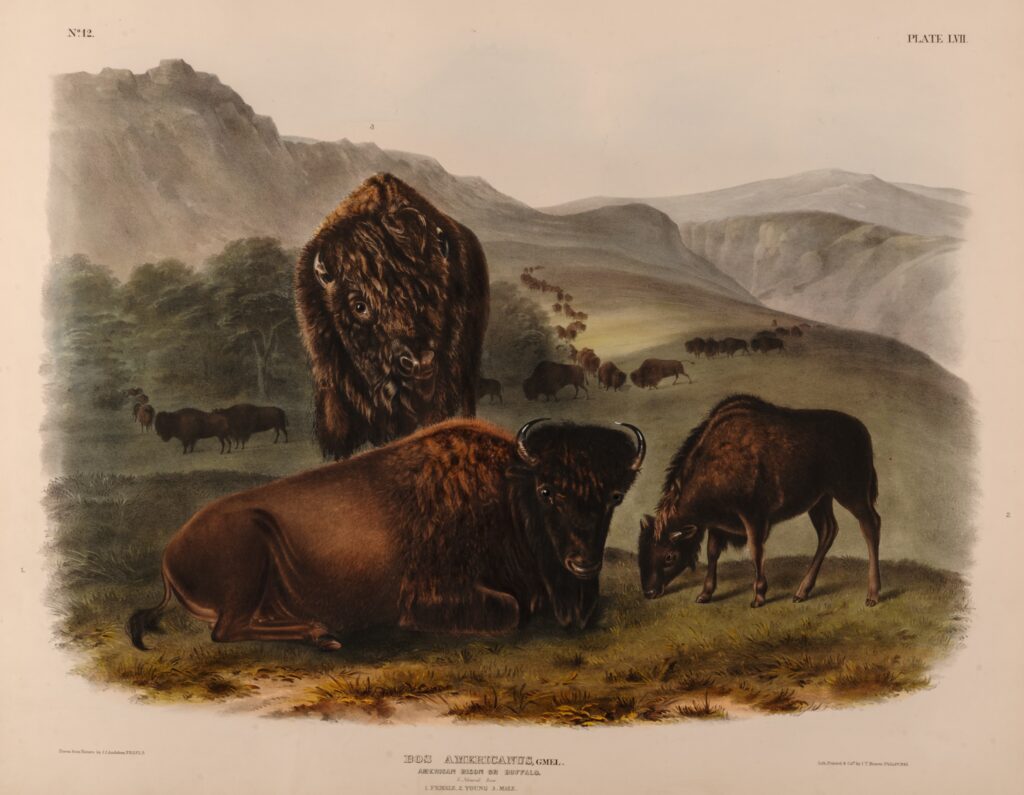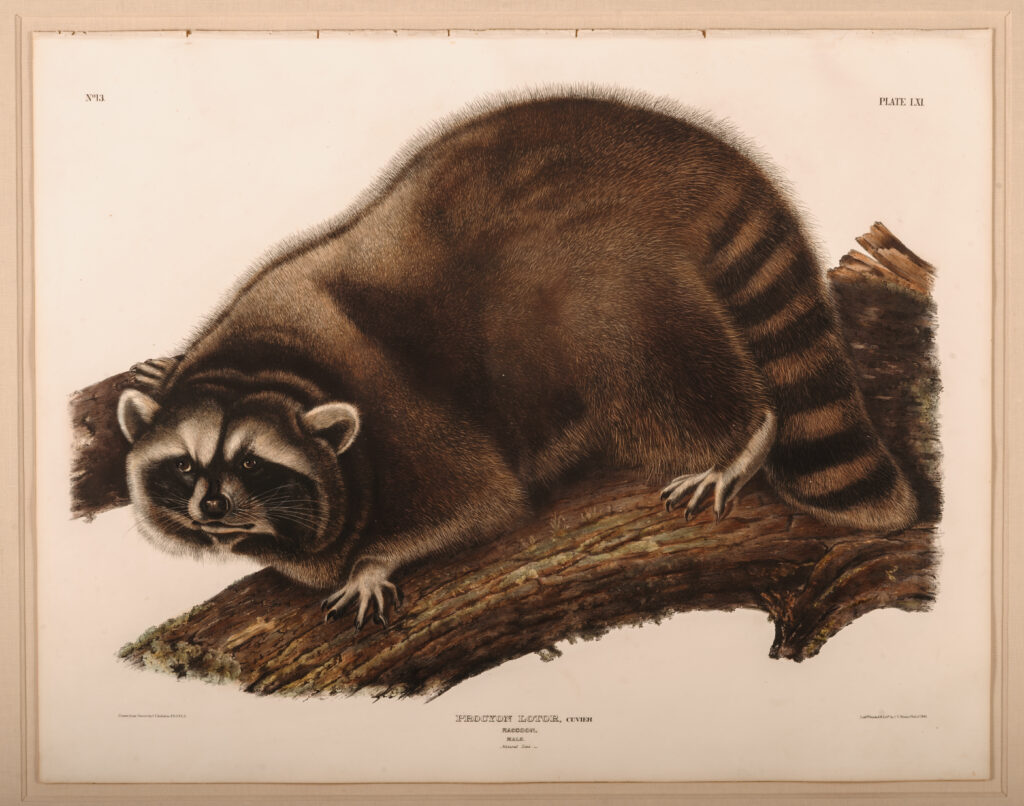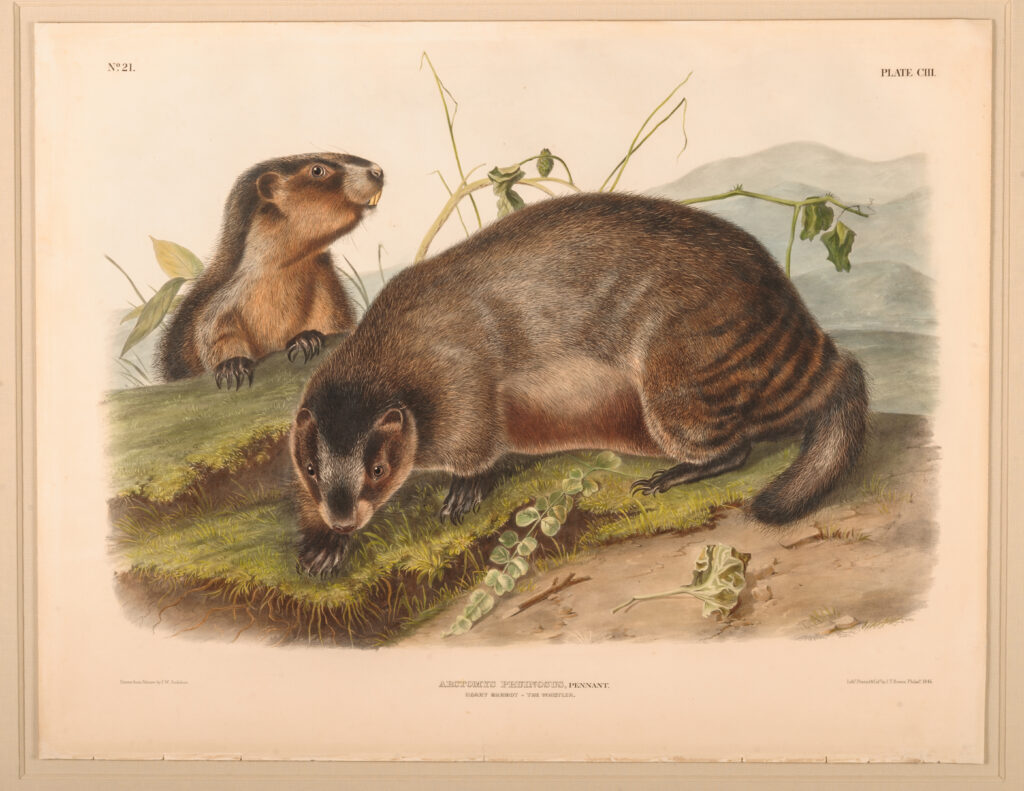
In the 1830s, after completing his monumental Birds of America series, John James Audubon (1785–1851) embarked on a new and equally ambitious project alongside his sons: documenting the mammals of North America. Their goal was to create a definitive visual record of American wildlife, rendered with the same remarkable precision and artistry that had defined Audubon’s work on birds. Years of field research, extensive travel, and painstaking study culminated in The Viviparous Quadrupeds of North America, a landmark work in 19th-century natural history and a lasting testament to Audubon’s dedication.
This exhibition showcases 38 original, large-format prints from Audubon’s Viviparous Quadrupeds series, generously donated by Mr. and Mrs. William H. Told, Jr. of New York and Palm Beach. Over four decades, the Tolds assembled this collection, beginning with a single marmot print gifted to them and expanding to include a wide variety of species—some now extinct. They were captivated by Audubon’s scientific accuracy and the intricate backgrounds that complement each animal, often featuring native plants and natural elements. This extraordinary collection is now part of the Huntsville Museum of Art’s holdings, offering a unique look at North America’s wildlife heritage through the eyes of a legendary naturalist and artist.
This exhibition offers visitors an immersive look into 19th-century natural history and the art of scientific illustration through Audubon’s unmatched attention to detail and artistry. With its vivid, life-sized portrayals of North American mammals, The Viviparous Quadrupeds of North America invites viewers to experience the wonder and diversity of wildlife as it was nearly two centuries ago, capturing species both familiar and rare. The large-format prints, some of which depict animals that have since become extinct, act as a bridge to the past, reminding visitors of the delicate balance between nature and human impact.


Contents:
- 38 original large-format prints from The Viviparous Quadrupeds of North America, featuring a range of North American mammals (two works from Audubon’s Birds of America series are also available upon request)
- Unique framing: Each piece is identically framed in burled walnut with gold-leaf liners, linen mats, and non-glare UV-filtering Plexiglas
- Subject Matter: Scientifically accurate depictions of American mammals, many set within lush, naturalistic backgrounds that highlight native plant life
Space Requirements:
1,500-2,000 square feet
Rental Fee and Terms:
- $12,500 for a 12-week rental period, plus round-trip shipping via an approved fine art carrier
- Additional weeks are available at a pro-rated rate
- A 50% deposit is due upon signing the rental agreement, with the remaining balance due within 30 days of the exhibition’s opening date at venue
Previous Venues:
- Appleton Museum of Art, Ocala, FL, 2016
- Biggs Museum of American Art, Dover, DE, 2018
- Tacoma Art Museum, Tacoma, WA, 2020
- Mennello Museum of American Art, Orlando, FL, 2024
Tour Dates:
Exhibition available to travel in 2025 and beyond
Contact:
For further information or to book this exhibition, please email curatorial@hsvmuseum.org.



![Grey Fox (Canis [Vulpes] Virginianus)](https://hsvmuseum.org/wp-content/uploads/2017/06/Grey-Fox-Canis-Vulpes-Virginianus-1024x816.jpg)

